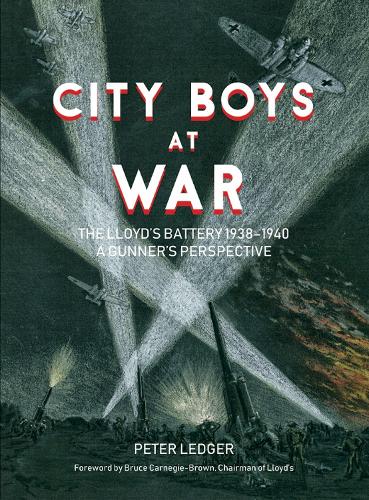
City Boys At War: The Lloyds Battery 19381940 A gunners perspective
Publishing Details
City Boys At War: The Lloyds Battery 19381940 A gunners perspective
By (Author) Peter Ledger
Unicorn Publishing Group
Uniform Press
8th November 2018
United Kingdom
Classifications
General
Non Fiction
Published diaries, letters and journals
Second World War
Battles / military campaigns
940.548141
Physical Properties
144
Width 172mm, Height 234mm
Description
City Boys at War considers a campaign of just eleven months, from September 1939 to July 1940, viewed at the micro level - the perspective of a gunner, his wife, his family and his comrades. In 1938 Alfred Ledger joined the Lloyd's Battery of the 53rd (City of London) Heavy Anti-Aircraft Regiment, Royal Artillery, a Territorial Army unit based at White City. He was called up in August 1939. This book's narrative is based on letters between Alfred and his wife and the regimental histories. It starts with the so-called Phoney War, the months up to the German attack in the west ending with Operation Dynamo and the escape of the British army from Dunkirk. However, the events described here do not end on the beaches of Dunkirk but with a second, little known, rescue, Operation Ariel (also known as Aerial), the organised escape of allied troops and civilians from ports in Brittany and western France. Ariel was just as successful in its objective as Dynamo, rescuing 190,000 troops. Dunkirk has become part of British folklore. Ariel has been forgotten. As for Haddock Force, the units sent south to defend French military airfields in the event of RAF bombers using them as refuelling bases en route to bombing northern Italian cities, history moves into the realms of mystery. But it is these events that the narrative follows.
Reviews
"What Peter Ledger does in City Boys at War is to take a detailed look at the frequently overlooked period from after the Battle of Poland and up to the Battle of France."-- "Forces Network"
Author Bio
Peter Ledger has an ongoing interest in history and regularly travels to the sites of military engagements to enhance his knowledge and understanding of what it must have been like for the soldiers involved. City Boys at War stems from a cache of letters exchanged between his uncle and aunt from the war.
